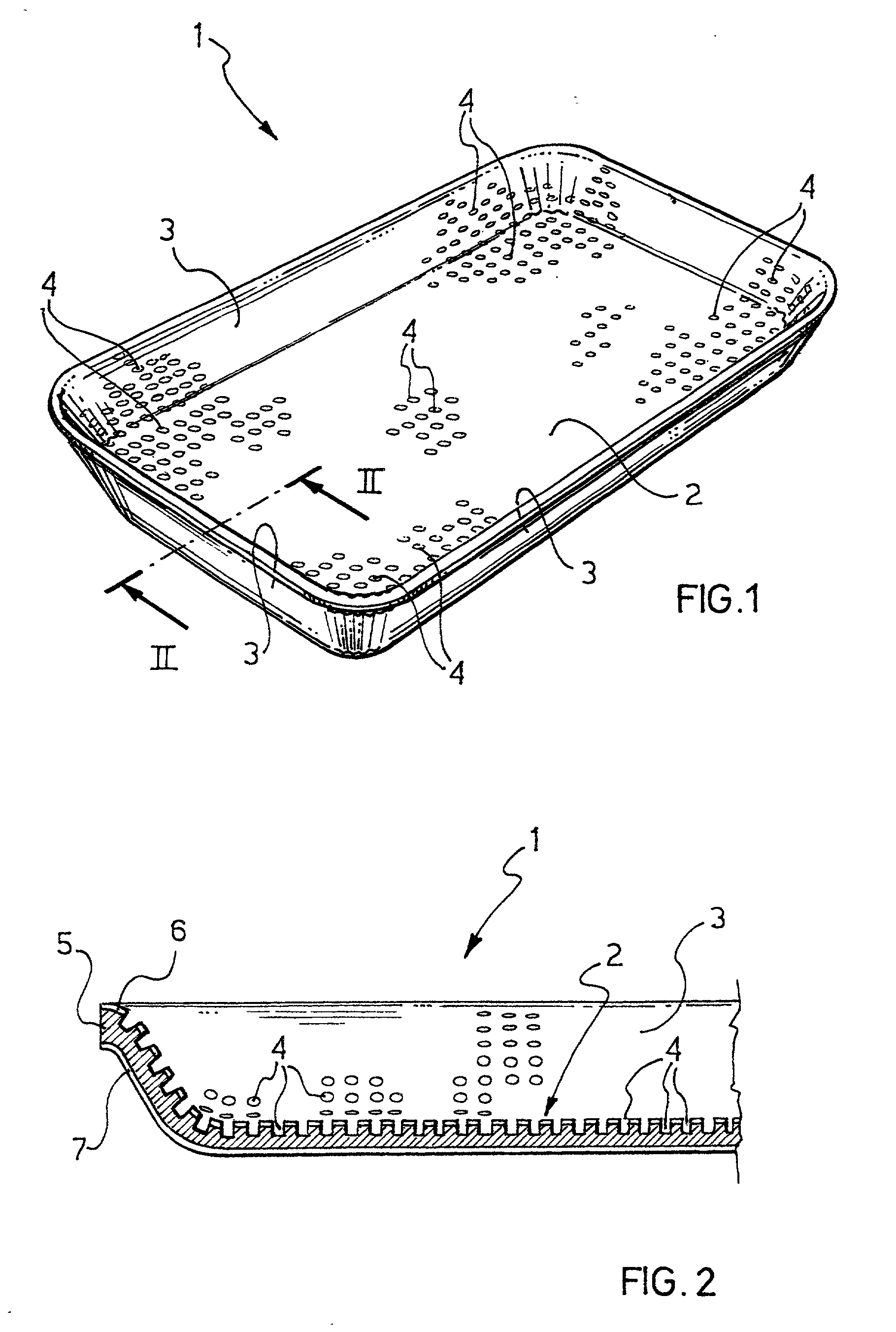Tray of thermoplastic material for the packaging of foodstuffs which tend to release bad smelling volatile substances
- Summary
- Abstract
- Description
- Claims
- Application Information
AI Technical Summary
Benefits of technology
Problems solved by technology
Method used
Image
Examples
Embodiment Construction
[0038] 108.5 kg of EXTIR.RTM. 1910 crystal polystyrene produced by ENICHEM were mixed with 19.6 kg of SR 550 shockproof polystyrene (HIPS) (ENICHEM) and with 7 kg of CSFB0014 masterbatch produced by the firm Ferro Italia, containing 60% of talc with dimensions of particles of about 5 .mu.m. Moreover, 4.9 kg of MA 250 powder alumina by the firm ALCAN were added, having average particle size of about 10 .mu.m. The total supply of solid material was of 140 kg / h.
[0039] The mixture thus obtained was fed to an LMP 19E double-screw extruder, in which liquid butane was injected (6 kg / h) as a blowing agent.
[0040] The temperature profile in the various regions of the extruder was as follows:
1 T1 261.degree. C. T2 260.degree. C. T3 259.degree. C. T4 124.degree. C. T5 122.degree. C. T6 120.degree. C. T7 118.degree. C. T8 119.degree. C. T9 114.degree. C. T10 109.degree. C.
[0041] The speed of the screw of the extruder was of 30 rev. per minute, and the pressure of the die reached 55 bar.
[0042] Th...
PUM
| Property | Measurement | Unit |
|---|---|---|
| Percent by mass | aaaaa | aaaaa |
| Percent by mass | aaaaa | aaaaa |
| Percent by mass | aaaaa | aaaaa |
Abstract
Description
Claims
Application Information
 Login to view more
Login to view more - R&D Engineer
- R&D Manager
- IP Professional
- Industry Leading Data Capabilities
- Powerful AI technology
- Patent DNA Extraction
Browse by: Latest US Patents, China's latest patents, Technical Efficacy Thesaurus, Application Domain, Technology Topic.
© 2024 PatSnap. All rights reserved.Legal|Privacy policy|Modern Slavery Act Transparency Statement|Sitemap

